
Explore the Historical Significance of Warsaw Ghetto Boundary Markers
Discover the poignant history of the Warsaw Ghetto boundary markers, a powerful tribute to resilience and remembrance in the heart of Poland.
The Warsaw Ghetto boundary markers serve as poignant reminders of the city's tumultuous history during World War II. These markers not only delineate the boundaries of the former ghetto but also commemorate the resilience and suffering of the Jewish community. Tourists are encouraged to visit and reflect on the profound impact of this historical site.
A brief summary to Warsaw Ghetto boundary markers
- Świętojerska, Warsaw, Śródmieście, 00-207, PL
- Monday 12 am-12 am
- Tuesday 12 am-12 am
- Wednesday 12 am-12 am
- Thursday 12 am-12 am
- Friday 12 am-12 am
- Saturday 12 am-12 am
- Sunday 12 am-12 am
Local tips
- Visit in the early morning or late afternoon for a quieter experience.
- Take a guided tour to gain deeper insights into the history of the area.
- Don't forget to bring a camera, but be respectful of the solemn nature of the site.
- Explore nearby historical sites like the Warsaw Uprising Museum for a broader context.
Getting There
-
Walking
If you are starting from the Warsaw Uprising Museum, head east on Grzybowska Street towards the intersection with Chłodna Street. Turn left onto Chłodna Street and continue for about 5 minutes until you reach the intersection with Świętojerska Street. Turn right onto Świętojerska Street. The Warsaw Ghetto boundary markers will be located along this street. Look for the historical markers along the way, which are placed at various points to commemorate the boundaries of the former ghetto.
-
Public Transport
From the Palace of Culture and Science, walk to the nearby Metro Station 'Centrum'. Take Metro Line 1 (the red line) towards Młociny and disembark at the stop 'Rondo ONZ' (2 stops). From there, take bus number 178 from the bus stop 'Rondo ONZ' towards 'Pl. Zawiszy'. Get off at the 'Świętojerska' bus stop. Walk a short distance south, and you will find the boundary markers along Świętojerska Street.
-
Walking
If you are near the Old Town, start at the Royal Castle. Head south towards the Vistula Boulevards, walking along the eastern side of the castle. Continue on this path until you reach the intersection at Świętojerska Street. Turn left onto Świętojerska Street, and the boundary markers will be along this street. This route offers a scenic walk along historical sites.
Discover more about Warsaw Ghetto boundary markers
Iconic landmarks you can’t miss
Długa 6
0.2 km
Explore Długa 6 in Warsaw's Śródmieście district, a stunning historical building that encapsulates the city's rich heritage and vibrant culture.

Raczyński Palace in Warsaw
0.2 km
Discover the stunning Raczyński Palace in Warsaw, a historical gem showcasing neoclassical architecture and rich cultural heritage.

Duval. serviced apartments
0.4 km
Discover comfort and convenience at Duval Serviced Apartments in the heart of Warsaw, the perfect base for your urban adventure.

Warsaw Ghetto Wall
0.4 km
Explore the Warsaw Ghetto Wall, a memorial park that stands as a powerful tribute to the resilience and history of the Jewish community in Poland during World War II.
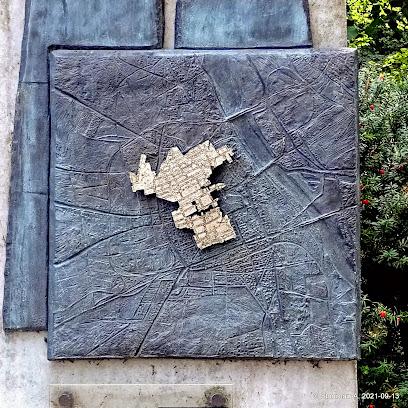
Old water pump
0.5 km
Uncover the historical charm of the Old Water Pump in Warsaw, a fascinating landmark reflecting the city's rich cultural heritage.

Warsaw New Town
0.5 km
Explore the enchanting streets of Warsaw New Town, where history, culture, and modern life beautifully intertwine in the heart of Poland.

Stone steps
0.5 km
Explore the historic Stone Steps in Warsaw, a cultural gem offering stunning views and a glimpse into the city's vibrant past.

Maria Skłodowska Curie Monument
0.5 km
Explore the legacy of Maria Skłodowska Curie at her monument, an inspiring tribute in the heart of Warsaw, showcasing the brilliance of science and innovation.

Monument to the Battle Trail from Lenino to Berlin
0.5 km
Explore the Monument to the Battle Trail from Lenino to Berlin in Warsaw, a powerful tribute to the courage of Polish soldiers during WWII.

Jesuit church
0.6 km
Explore the serene beauty and rich history of the Jesuit Church in Warsaw, a stunning baroque masterpiece in the heart of the city.

St Martin's Church
0.6 km
Explore the architectural beauty and serene ambiance of St. Martin's Church, a spiritual gem in Warsaw's vibrant heart.

Monument to the Fallen and Murdered in the East
0.6 km
Explore the Monument to the Fallen and Murdered in the East, a powerful tribute to Poland's resilience and a must-visit site for history enthusiasts in Warsaw.

Monument to the Heroes of Warsaw
0.6 km
Explore the Monument to the Heroes of Warsaw, a powerful tribute to resilience in the heart of Poland's capital, steeped in rich history and significance.

Bas-relief "Mazovia"
0.6 km
Explore the Bas-relief Mazovia, a stunning sculpture in the heart of Warsaw that reflects the rich cultural heritage of the Mazovia region.

Archcathedral Basilica of St. John the Baptist
0.6 km
Explore the beauty and history of the Archcathedral Basilica of St. John the Baptist, a Gothic masterpiece in the heart of Warsaw, Poland.

Unmissable attractions to see
Aigner's Well on Krasiński Square
0.1 km
Experience the historical significance and serene beauty of Aigner's Well in Krasiński Square, a charming landmark in the heart of Warsaw.

Warsaw Uprising Monument
0.1 km
Explore the Warsaw Uprising Monument, a powerful tribute to resilience and bravery amid Poland's tumultuous history.

Krasiński Palace
0.2 km
Discover the elegance of Krasiński Palace, a historical landmark in Warsaw that showcases Poland's rich cultural heritage and stunning architecture.

Fountain
0.2 km
Explore the stunning Fountain at Ogród Krasińskich, a serene oasis in Warsaw, blending natural beauty with rich history for an unforgettable experience.
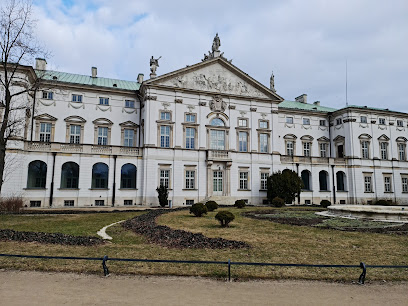
Field Cathedral of the Polish Army
0.2 km
Discover the Field Cathedral of the Polish Army in Warsaw - a magnificent blend of history, architecture, and spirituality in the heart of Poland.

Maria Skłodowska-Curie Museum
0.3 km
Immerse yourself in the life and legacy of Marie Curie at the inspiring Maria Skłodowska-Curie Museum in Warsaw.

Najmniejszy budynek w Warszawa
0.3 km
Discover the charm of Warsaw's Smallest Building, a historical landmark that showcases the city's unique architectural heritage and creativity.

Podwale 25 Kompania Piwna
0.3 km
Experience the rich flavors of Polish cuisine at Podwale 25 Kompania Piwna, where every meal is a celebration of culinary tradition.

Unicorn Well
0.3 km
Experience the serene beauty and historical charm of Unicorn Well, a captivating tourist attraction in the heart of Warsaw.
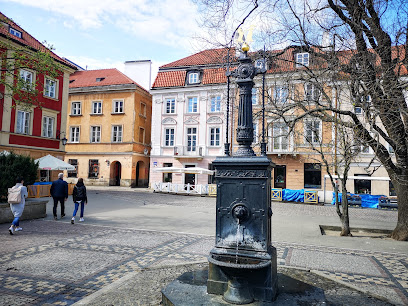
Krasiński Garden
0.3 km
Explore the lush landscapes and historic charm of Krasiński Garden, a peaceful retreat in the heart of Warsaw, perfect for relaxation and exploration.

Lutheran Centre
0.3 km
Discover the serene beauty and spiritual heritage of the Lutheran Centre in Warsaw, an architectural gem in the heart of the city.

Mały Powstaniec
0.3 km
Explore the heartfelt tribute of Mały Powstaniec, a poignant war memorial in Warsaw honoring the brave youth of the Warsaw Uprising.

Warsaw Barbican
0.3 km
Explore the Warsaw Barbican, a historical landmark that showcases the rich heritage and architectural beauty of Poland's capital city.

New Town Market
0.3 km
Experience the vibrant culture and historical significance of New Town Market, a must-visit landmark in the heart of Warsaw.
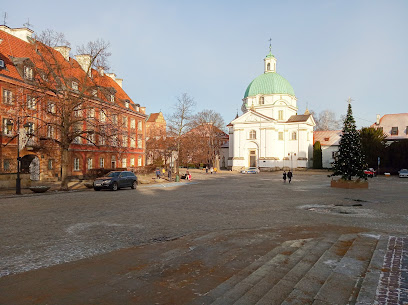
MUZEUM DOMKÓW LALEK, GIER I ZABAWEK
0.4 km
Discover the magic of childhood at the Toy Museum in Warsaw, showcasing exquisite dollhouses, toys, and interactive exhibits for all ages.

Essential places to dine
Pasieka
0.2 km
Experience authentic Polish cuisine at Pasieka in Warsaw – where tradition meets flavor in every dish.

Pod Samsonem
0.2 km
Discover authentic Polish cuisine at Pod Samsonem in Warsaw – where tradition meets modern dining in a cozy atmosphere.

Zapiecek
0.3 km
Discover the authentic taste of Poland at Zapiecek - home to delicious dumplings and traditional dishes in Warsaw.

U Pana Michała
0.3 km
Experience authentic Polish flavors at U Pana Michała in Warsaw's charming Śródmieście district.

Restauracja Boruta
0.3 km
Discover authentic Polish flavors at Restauracja Boruta in Warsaw - where tradition meets modern dining in a cozy atmosphere.

Freta 33
0.3 km
Experience authentic Polish cuisine in a cozy atmosphere at Freta 33, Warsaw's hidden culinary gem.

Gościniec
0.3 km
Discover Gościniec: A Culinary Journey Through Authentic Polish Flavors in Warsaw's Heart.

Enoteka Warszawska
0.3 km
Experience exquisite European and Polish cuisine paired with exceptional wines at Enoteka Warszawska in Warsaw's historic New Town Market.
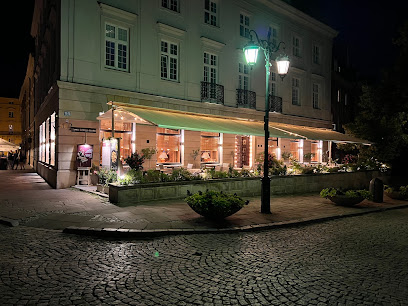
STOLICA Restauracja Stare Miasto Warszawa starówka kuchnia polska
0.4 km
Savor authentic Polish flavors at STOLICA Restaurant in Warsaw's charming Old Town – a culinary gem for every visitor.

Galeria Nowe Miasto
0.4 km
Experience authentic Polish cuisine at Galeria Nowe Miasto - where every dish tells a story in the heart of Warsaw.

Restauracja La Rotisserie
0.4 km
Experience exquisite Modern European cuisine at Restauracja La Rotisserie in Warsaw's charming Śródmieście district.

Gospoda Kwiaty Polskie
0.4 km
Experience authentic Polish cuisine at Gospoda Kwiaty Polskie in Warsaw's vibrant Śródmieście district.

U Fukiera
0.4 km
Experience authentic Polish cuisine in a charming historic setting at U Fukiera in Warsaw's Old Town.

Restauracja Portretowa
0.5 km
Experience authentic Polish cuisine with a modern twist at Restauracja Portretowa in the heart of Warsaw.

Restauracja Kamienne Schodki s.c.
0.5 km
Experience authentic Polish cuisine at Restauracja Kamienne Schodki in Warsaw's historic Old Town—where tradition meets taste.

Markets, malls and hidden boutiques
Sofia & Sonia
0.2 km
Discover unique local craftsmanship at Sofia & Sonia, a charming boutique in Warsaw showcasing exquisite Polish design and artistry.

Syrenka Gift Store 美人鱼精品屋
0.2 km
Explore Syrenka Gift Store in Warsaw for unique Polish souvenirs and gifts that capture the essence of the city's culture and artistry.

Butik Hybrique
0.3 km
Explore unique fashion at Butik Hybrique, a delightful clothing boutique in Warsaw showcasing local craftsmanship and contemporary style.

Love Poland Design
0.3 km
Explore Love Poland Design in Warsaw for exquisite Polish souvenirs that embody culture, craftsmanship, and creativity.

delf-sklep
0.3 km
Discover unique local crafts and trendy goods at Delf-Sklep, a must-visit store in the heart of Warsaw.

Sklep z Pamiątkami Gregory
0.4 km
Explore the vibrant essence of Warsaw at Sklep z Pamiątkami Gregory, your go-to souvenir store for unique Polish crafts and gifts.

Souvenir Studio
0.5 km
Explore Souvenir Studio in Warsaw for unique handmade gifts and local treasures that capture the essence of Poland.

Amber Art Gallery. Silver Line.
0.5 km
Discover the enchanting world of amber and artistry at Warsaw's Amber Art Gallery, a must-visit for jewelry lovers and art enthusiasts.

Souvenir Plaza
0.5 km
Explore Souvenir Plaza in Warsaw for unique Polish souvenirs and outdoor gear, perfect for every traveler looking to take home a piece of Poland.

House of Polish Folk Art
0.5 km
Explore the vibrant traditions of Poland at the House of Polish Folk Art, a must-visit art gallery and souvenir store in the heart of Warsaw.

Mix-Shop SOUVENIRS
0.5 km
Explore a unique blend of Polish culture at Mix-Shop SOUVENIRS, where unforgettable gifts and keepsakes await every traveler.

Magic Gift Shop
0.5 km
Explore the Magic Gift Shop in Warsaw for unique souvenirs and gifts that embody the charm of Polish culture.

Sklep August Galeria
0.5 km
Explore Sklep August Galeria in Warsaw for unique Polish souvenirs that capture the essence of local craftsmanship and culture.

Magnetic Warsaw
0.5 km
Explore a treasure trove of unique Polish souvenirs at Magnetic Warsaw, where every item tells a story of tradition and culture.

SOUVENIRCITY
0.5 km
Explore unique Polish souvenirs and exquisite pottery at SouvenirCity, a treasure trove of cultural gifts in the heart of Warsaw.

Essential bars & hidden hideouts
Delirium Warszawa
0.2 km
Experience the vibrant craft beer culture at Delirium Warszawa, a must-visit brewpub in the heart of Poland's capital.

Belgian Elephant Pub
0.2 km
Discover the authentic taste of Belgium at the Belgian Elephant Pub, where exceptional brews and delightful dishes await every visitor in Warsaw.

POW - Point of Wine
0.3 km
Experience the best of Warsaw's wine culture at POW - Point of Wine, a cozy pub offering an exquisite selection and inviting atmosphere.

Polyester Cafe
0.3 km
Discover Polyester Cafe in Warsaw, a lively pub offering a mix of cocktails, wine, and local beers in a vibrant atmosphere perfect for socializing.

Nowe Miasto Varsovia
0.3 km
Experience the energetic vibe of Nowe Miasto Varsovia, Warsaw's premier cocktail bar, blending tradition with modernity in every drink.

Podwale Bar and Books
0.3 km
Discover the charm of Podwale Bar and Books in Warsaw, where sophisticated drinks meet a cozy atmosphere for an unforgettable experience.

Same Krafty Vis-a-Vis
0.4 km
Discover the unique flavors of craft beer at Same Krafty Vis-a-Vis, a charming bar in the heart of Warsaw with a welcoming atmosphere and local brews.

WarSaw Pub
0.4 km
Discover WarSaw Pub: A lively brewpub in Warsaw offering delicious food, craft beers, and unforgettable entertainment in a vibrant atmosphere.
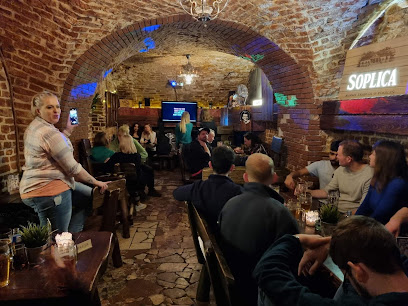
Same Krafty - Multitap
0.4 km
Discover the vibrant atmosphere and delightful flavors at Same Krafty - Multitap, a must-visit bar and fast food restaurant in the heart of Warsaw.

Shabby Coffee • Wine • Books
0.5 km
Immerse yourself in a unique blend of coffee, wine, and literature at Shabby Coffee • Wine • Books in Warsaw, a must-visit for all visitors.

Irish Pub Miodowa
0.7 km
Discover authentic Irish cuisine and a friendly atmosphere at Irish Pub Miodowa, a must-visit spot in Warsaw for food and fun.

The Roots Cocktail Bar & More
0.8 km
Discover The Roots Cocktail Bar in Warsaw, where unique cocktails and a lively atmosphere create unforgettable nights.

Klar Cocktail Bar
0.9 km
Discover the vibrant Klar Cocktail Bar in Warsaw, where expertly crafted cocktails meet delicious pizzas in a stylish lounge atmosphere.

Column Bar
1.2 km
Experience the elegance of Column Bar in Warsaw, where exquisite cocktails and live music create an unforgettable night out.

Long Bar
1.2 km
Discover Warsaw's nightlife at Long Bar, where sophisticated cocktails meet a vibrant atmosphere in the heart of the city.




